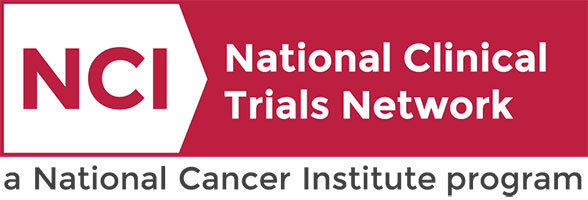Neoadjuvant Chemotherapy, Excision And Observation vs Chemoradiotherapy For Rectal Cancer
Neoadjuvant Chemotherapy, Excision And Observation vs Chemoradiotherapy For Rectal Cancer
This study is being done to answer the following questions: Is the chance of rectal cancer responding the same if chemotherapy alone is given before limited surgery compared to chemotherapy and radiation therapy given together before limited surgery? If radiation therapy is not given, is quality of life better?
Not Available
Phase III
Adults
Chemotherapy - cytotoxic,
Radiotherapy
5-FU (Fluorouracil),
5FU continuous infusion,
Capecitabine,
Leucovorin,
Oxaliplatin
Eng, Cathy
National
Vanderbilt University
04-08-2025
Eligibility
18 Years and older
ALL
false
Inclusion Criteria:
Histologically confirmed invasive, well-moderately differentiated rectal adenocarcinoma, mismatch repair proficient.
MRI stage cT1 not eligible for transanal surgery or cT2-T3a.
cN0 stage based on pelvic MRI - including absence of radiographic evidence of mesorectal nodal metastasis, tumour deposits or extramural venous invasion (EMVI).
M0 stage based on no evidence of metastatic disease by CT imaging of chest, abdomen and pelvis.
Mid to low-lying tumour eligible for transanal excision in the opinion of the treating surgeon.
Medically fit to undergo radical TME surgery as per treating surgeon's decision.
Participant is able (i.e. sufficiently fluent) and willing to complete the quality of life questionnaires in either English or French or Spanish.
Age of at least 18 years.
No contraindications to protocol chemotherapy.
Adequate normal organ and marrow function: ANC x 10\^9/L; platelet count 100 x 10\^9/L; bilirubin 1.5 UNL, excluding Gilbert's syndrome; Estimated creatinine clearance of 50ml/min
Patient must have an ECOG performance of 2 (or Karnofsty 60%).
Must be accessible for treatment and follow-up
Males and females of reproductive potential must have agreed to use a highly effective contraceptive method during and for 6 months after completion of chemotherapy.
HIV-infected patients on effective anti-retroviral therapy with undetectable viral load within 6 months are eligible for this trial.
Exclusion Criteria:
Pathologic high-risk factors on diagnostic biopsy: high histologic grade (poorly differentiated), mucinous or signet ring histology.
Patients with visible pelvic sidewall nodes on MRI.
Patients with unequivocal determination of nodal disease that, in the opinion of the investigator, would prohibit protocol therapy administration.
Previous pelvic radiation for any reason, including brachytherapy alone.
Patients who have had primary lesion excised prior to enrollment. If a patient has had partial excision prior to enrollment, there must be gross residual disease endoscopically for patient to be eligible.
Patients with a prior or concurrent malignancy whose natural history or treatment does not have the potential to interfere with the safety or efficacy assessment of the investigational regimen are eligible for this trial.
Prior treatment for rectal cancer.
Patients with known dihydropyrimidine dehydrogenase deficiency (DYPD).
Potential trial participants should have recovered from clinically significant adverse events of their most recent therapy/intervention prior to enrollment.
Patients with known history or current symptoms of cardiac disease, or history of treatment with cardiotoxic agents, should have a clinical risk assessment of cardiac function using the New York Heart Association Functional Classification. To be eligible for this trial, patients should be class 2B or better.
Any contra-indications to undergo MRI imaging.
Presence of anterior lesions above or near peritoneal reflection rendering the patient ineligible for a transanal tumour excision.
T3 tumours invading or abutting the internal sphincter.
Histologically confirmed invasive, well-moderately differentiated rectal adenocarcinoma, mismatch repair proficient.
MRI stage cT1 not eligible for transanal surgery or cT2-T3a.
cN0 stage based on pelvic MRI - including absence of radiographic evidence of mesorectal nodal metastasis, tumour deposits or extramural venous invasion (EMVI).
M0 stage based on no evidence of metastatic disease by CT imaging of chest, abdomen and pelvis.
Mid to low-lying tumour eligible for transanal excision in the opinion of the treating surgeon.
Medically fit to undergo radical TME surgery as per treating surgeon's decision.
Participant is able (i.e. sufficiently fluent) and willing to complete the quality of life questionnaires in either English or French or Spanish.
Age of at least 18 years.
No contraindications to protocol chemotherapy.
Adequate normal organ and marrow function: ANC x 10\^9/L; platelet count 100 x 10\^9/L; bilirubin 1.5 UNL, excluding Gilbert's syndrome; Estimated creatinine clearance of 50ml/min
Patient must have an ECOG performance of 2 (or Karnofsty 60%).
Must be accessible for treatment and follow-up
Males and females of reproductive potential must have agreed to use a highly effective contraceptive method during and for 6 months after completion of chemotherapy.
HIV-infected patients on effective anti-retroviral therapy with undetectable viral load within 6 months are eligible for this trial.
Exclusion Criteria:
Pathologic high-risk factors on diagnostic biopsy: high histologic grade (poorly differentiated), mucinous or signet ring histology.
Patients with visible pelvic sidewall nodes on MRI.
Patients with unequivocal determination of nodal disease that, in the opinion of the investigator, would prohibit protocol therapy administration.
Previous pelvic radiation for any reason, including brachytherapy alone.
Patients who have had primary lesion excised prior to enrollment. If a patient has had partial excision prior to enrollment, there must be gross residual disease endoscopically for patient to be eligible.
Patients with a prior or concurrent malignancy whose natural history or treatment does not have the potential to interfere with the safety or efficacy assessment of the investigational regimen are eligible for this trial.
Prior treatment for rectal cancer.
Patients with known dihydropyrimidine dehydrogenase deficiency (DYPD).
Potential trial participants should have recovered from clinically significant adverse events of their most recent therapy/intervention prior to enrollment.
Patients with known history or current symptoms of cardiac disease, or history of treatment with cardiotoxic agents, should have a clinical risk assessment of cardiac function using the New York Heart Association Functional Classification. To be eligible for this trial, patients should be class 2B or better.
Any contra-indications to undergo MRI imaging.
Presence of anterior lesions above or near peritoneal reflection rendering the patient ineligible for a transanal tumour excision.
T3 tumours invading or abutting the internal sphincter.


